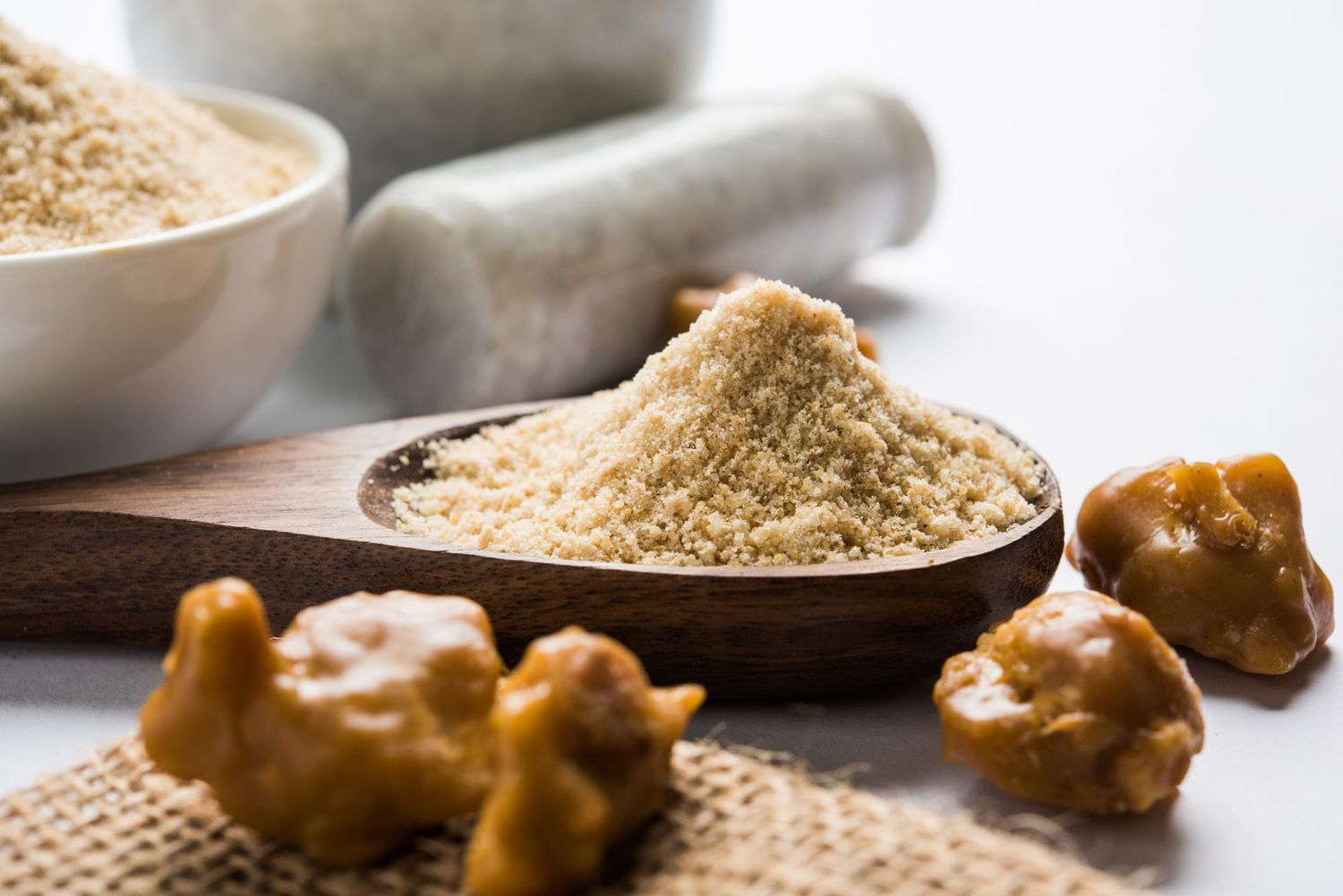
Asafoetida, also known as “hing,” is a unique and pungent spice that has been used in cooking and traditional medicine for centuries. Derived from the resin of the Ferula plant, asafoetida is commonly used in Indian, Middle Eastern, and Central Asian cuisines to add a distinctive flavor and aroma to various dishes. However, there is more to this potent spice than meets the eye.
In this article, we will unveil 14 fascinating facts about asafoetida that will not only pique your curiosity but also enhance your understanding of this versatile ingredient. From its origins and health benefits to its culinary uses and storage techniques, get ready to delve into the captivating world of asafoetida.
Key Takeaways:
- Asafoetida, also known as “devil’s dung,” is a resinous gum with a strong, onion-garlic-musk flavor. It’s used in Indian and Middle Eastern cuisine, and has health benefits like aiding digestion and reducing bloating.
- Asafoetida, popular in vegetarian cooking, has antimicrobial properties and is used in religious rituals. It’s available in powder or resin form and is a key ingredient in spice blends like curry powder.
Asafoetida is a resinous gum
Asafoetida, also known as “devil’s dung,” is a resinous gum derived from the taproot of the Ferula plant. It has a strong, pungent odor and is commonly used in cooking.
It has a rich history
Asafoetida has been used for centuries in traditional medicine and as a culinary spice. It originated in the Middle East and was later introduced to India, where it became a staple in many regional cuisines.
It adds a unique flavor to dishes
Known for its strong and distinctive aroma, asafoetida is often used as a flavor enhancer in Indian and Middle Eastern cuisine. It has a flavor profile that is described as a combination of onion, garlic, and musk.
It has several health benefits
Asafoetida is believed to have various medicinal properties. It is known to aid digestion, reduce bloating and gas, and relieve stomach-related ailments. It is also used in traditional medicine to treat respiratory conditions such as asthma and bronchitis.
It is used as a substitute for garlic and onion
Asafoetida can be a great alternative for those who cannot consume garlic or onion due to dietary restrictions or personal preferences. It provides a similar flavor profile and adds depth to dishes.
It is commonly used in vegetarian cooking
Asafoetida is particularly popular in vegetarian and vegan cooking as it adds a savory and umami flavor to dishes that would typically rely on meat for taste.
It has antimicrobial properties
Studies have shown that asafoetida has antimicrobial properties, making it effective against various bacteria and fungi. It has been used to prevent food spoilage and as a natural preservative.
It has religious significance
Asafoetida is used in certain religious rituals and ceremonies in Hinduism. It is believed to have purifying properties and is used to ward off evil spirits.
It is used in traditional medicine
Asafoetida has been used in Ayurvedic and traditional medicine for its anti-inflammatory, antioxidant, and analgesic properties. It is believed to have a calming effect on the nervous system and can be used to treat anxiety and insomnia.
It has a variety of other names
Aside from being known as asafoetida, this resinous gum goes by various other names such as hing, hingu, perungayam, and ting.
It is available in both powder and resin form
Asafoetida can be purchased in powder form, which is more commonly used in cooking, or as a solid resin. The resin is typically diluted in water or oil before adding it to dishes.
It has a strong smell when raw
Raw asafoetida has an incredibly strong and pungent smell, which is why it is often stored in airtight containers to prevent the odor from permeating other ingredients in the kitchen.
Culinary uses extend beyond Indian cuisine
While asafoetida is most commonly associated with Indian cuisine, it is also used in various dishes from other parts of the world, including Iran, Afghanistan, and certain regions of the Mediterranean.
It is a key ingredient in some spice blends
Asafoetida is an essential component in spice blends such as curry powder and garam masala. Its unique flavor helps to balance and enhance the overall taste of these mixtures.
These 14 facts about asafoetida provide a glimpse into the fascinating history, culinary uses, and health benefits of this versatile spice. Whether you’re a fan of Indian cuisine or simply curious about exploring new flavors, adding a pinch of asafoetida to your dishes can elevate the taste and aroma to a whole new level.
Conclusion
Asafoetida, also known as “devil’s dung,” is a fascinating spice with a wide range of benefits and uses. From its pungent aroma to its impressive health properties, asafoetida has been a staple in many cuisines and traditional medicine practices for centuries.
Whether you’re looking to enhance the flavors of your dishes or alleviate digestive issues, asafoetida can be a valuable addition to your kitchen and wellness routine. Its antimicrobial, anti-inflammatory, and antioxidant properties make it a powerful spice with numerous health benefits.
Keep in mind that asafoetida is potent, so a little goes a long way. It’s typically used in small quantities to add a unique umami flavor to curries, stews, pickles, and other savory dishes. So, the next time you come across a recipe that calls for asafoetida, don’t shy away from trying this remarkable ingredient.
FAQs
Q: What is asafoetida?
Asafoetida is a dried resin obtained from the roots of Ferula plants. It is known for its strong and pungent aroma, resembling a mixture of sulfur and onions.
Q: What are the health benefits of asafoetida?
Asafoetida possesses numerous health benefits. It is known for its digestive properties, helping to improve gut health and alleviate flatulence and bloating. It also has anti-inflammatory and antimicrobial properties that can support overall immune health.
Q: How is asafoetida used in cooking?
Asafoetida is used in cooking as a flavor enhancer. It is typically added to hot oil or ghee to release its aromatic compounds. It is commonly used in Indian, Middle Eastern, and North African cuisines to add a unique and savory flavor to curries, dals, and pickles.
Q: Can asafoetida be used as a substitute for garlic or onions?
Yes, asafoetida can be used as a substitute for garlic and onions, especially in dishes where these ingredients are not suitable. It provides a similar flavor profile and aroma, making it a great alternative for those with dietary restrictions or allergies.
Q: Are there any side effects of consuming asafoetida?
When used in moderation, asafoetida is generally safe for consumption. However, it can cause allergic reactions in some individuals. It is advisable to start with small amounts and consult with a healthcare professional, especially if you have any underlying health conditions.
Asafoetida's rich history and medicinal properties make it a fascinating spice. If you're curious about other natural remedies, herbal medicines offer a wealth of options. Asafoetida is also a staple in Indian cuisine, known for its vibrant flavors and aromatic spices. For those interested in unique taste experiences, exploring Breeze flavors can be an exciting culinary adventure. Each of these topics provides a glimpse into the diverse world of spices, traditional medicines, and flavor profiles.
Was this page helpful?
Our commitment to delivering trustworthy and engaging content is at the heart of what we do. Each fact on our site is contributed by real users like you, bringing a wealth of diverse insights and information. To ensure the highest standards of accuracy and reliability, our dedicated editors meticulously review each submission. This process guarantees that the facts we share are not only fascinating but also credible. Trust in our commitment to quality and authenticity as you explore and learn with us.


